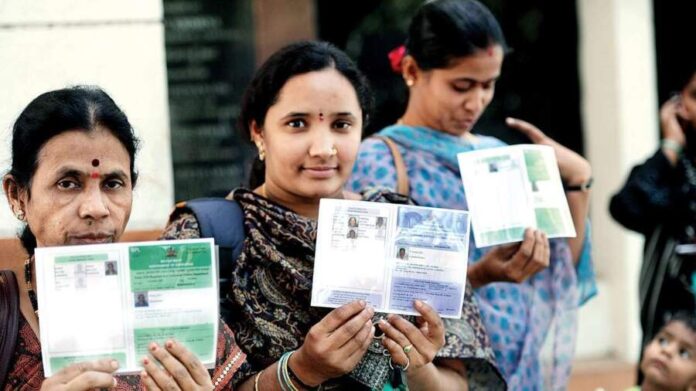A ration card issued by the Indian government categorises residents by their socio-economic status. One of the major purposes of issuing this card is to enable the government to distribute basic food and other daily utility items to households at a subsidised rate. It also acts as an identity proof to validate the residence proof of citizens.
The Indian Government issues different types of ration cards to demarcate families according to financial bracket. Resultantly, the government bodies can prioritise beneficiaries who need more financial attention.
Let’s know about all categories of this ration card and their eligibility and benefits.
Types of Ration Cards Issued Under NFSA
According to the National Food Security Act (NFSA) of India, the government has two major categories of ration cards, as mentioned below:
- Priority Household (PHH)
- Antyodaya Anna Yojana (AAY)
Follow on to learn about these two types of ration cards in detail.
Priority Household (PHH)
Every state government identifies families to be included under this Priority Household category according to the criteria of the Targeted Public Distribution System (TDPS). They are eligible to receive food grains at a subsidised rate.
PHH is also subdivided into three types of ration cards according to the financial condition of the family. These are APL (Above Poverty Level), BPL (Below Poverty Level) and AY (Annapurna Yojana).
Features and Benefits of PHH Ration Cards
Here are the benefits that the PHH ration card owners can enjoy:
- All the card owners are eligible to get a minimum of 5 kg of food grains every week at a subsidised rate.
- The price enlisted individuals have to pay are as follows:
Rice: Rs. 3/kg
Wheat: Rs. 2/kg
Coarse grains: Rs. 1/kg
Now that you know the benefits of this PHH ration card, discover its eligibility parameters:
Eligibility Criteria of PHH Ration Card
Following category of citizens are eligible to hold this type of ration card:
- Transgender individuals
- Individuals with disability over 40%
- Families that have no shelter
- Households relying on alms for livelihoods
- Families having a widowed pensioner
Sub-categories of PHH Ration Cards
Below are three sub-types of PHH ration cards and the benefits it provides to cardholders:
- APL: APL cardholders are eligible to get 20 kg of food grains every month at a 100% subsidised rate (this price may vary in different states of India).
- BPL: BPL cardholders can enjoy 20 kg of food grains at a 50% discount on the subsidised rate.
- AY: The eligible individuals can enjoy 10 kg food grains. Only citizens above 65 years of age is eligible for this type of ration card (the eligibility parameters of this card may be different across different states in India).
These are all you need to learn about this PHH ration card. Now, discover the aspects of Antyodaya Anna Yojana (AAY) Ration Card.
Antyodaya Anna Yojana (AAY) Ration Cards
The NFSA issues these AAY ration cards for individuals belonging to underprivileged socio-economic strata. Generally, people with no income source, elderly individuals. etc., come under this category.
Let’s know all the features, benefits and eligibility criteria of this AAY ration card:
Features and Benefits of AAY Ration Cards
Following are the advantages an AAY cardholder can enjoy:
- Individuals will get food grains weighing 35 kg at a subsidised rate.
- Following are the designated discount price that the eligible individuals will pay:
Rice: Rs. 3/kg
Wheat: Rs. 2/kg
Coarse grains: Rs. 1/kg
Inclusion Criteria of AAY Ration Card
Here are the parameters following which the government includes individuals to the beneficiary list of this type of ration card:
- Family members of primitive households, tribal groups
- Citizens over the age group of 60
- Widows without any family members or community to provide support
- Households in which the head members are disabled or sick
- Agricultural labourers with no land
- Marginal cultivators
- Rural craftsmen and artisans
AAY does not have any subcategory like PHH ration cards. You can apply for any type of ration cards online.
With all these types of ration cards, the Indian Government has tried to help citizens, basically the vulnerable and poor people, with basic food grains at a subsidised price. Furthermore, categorisation of ration cards has assisted the government in ordering the households according to their socio-economic status.






























































